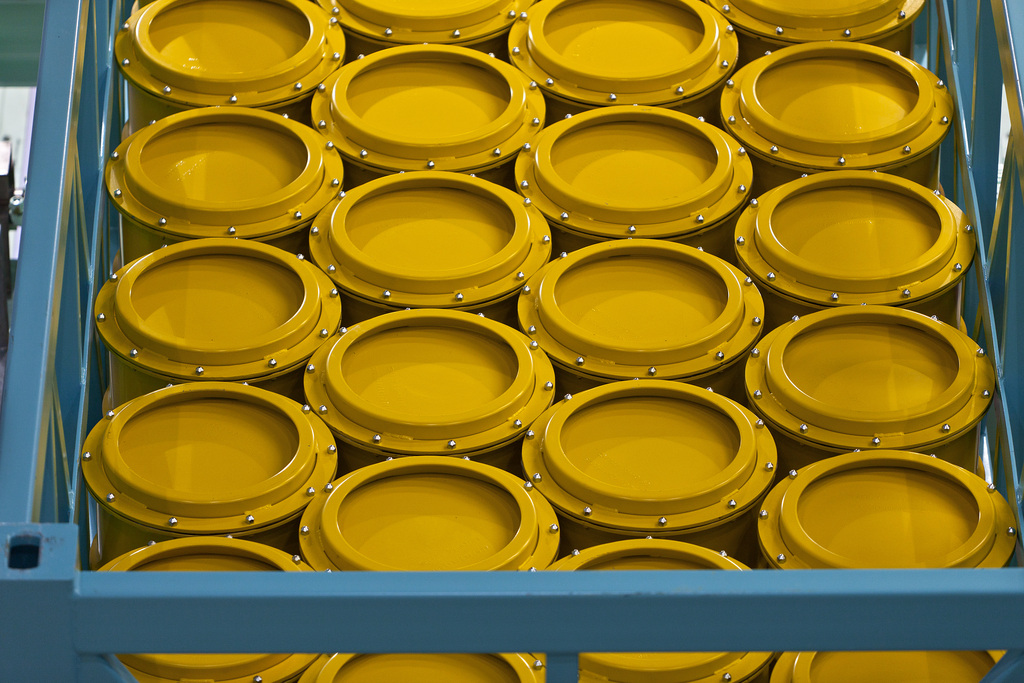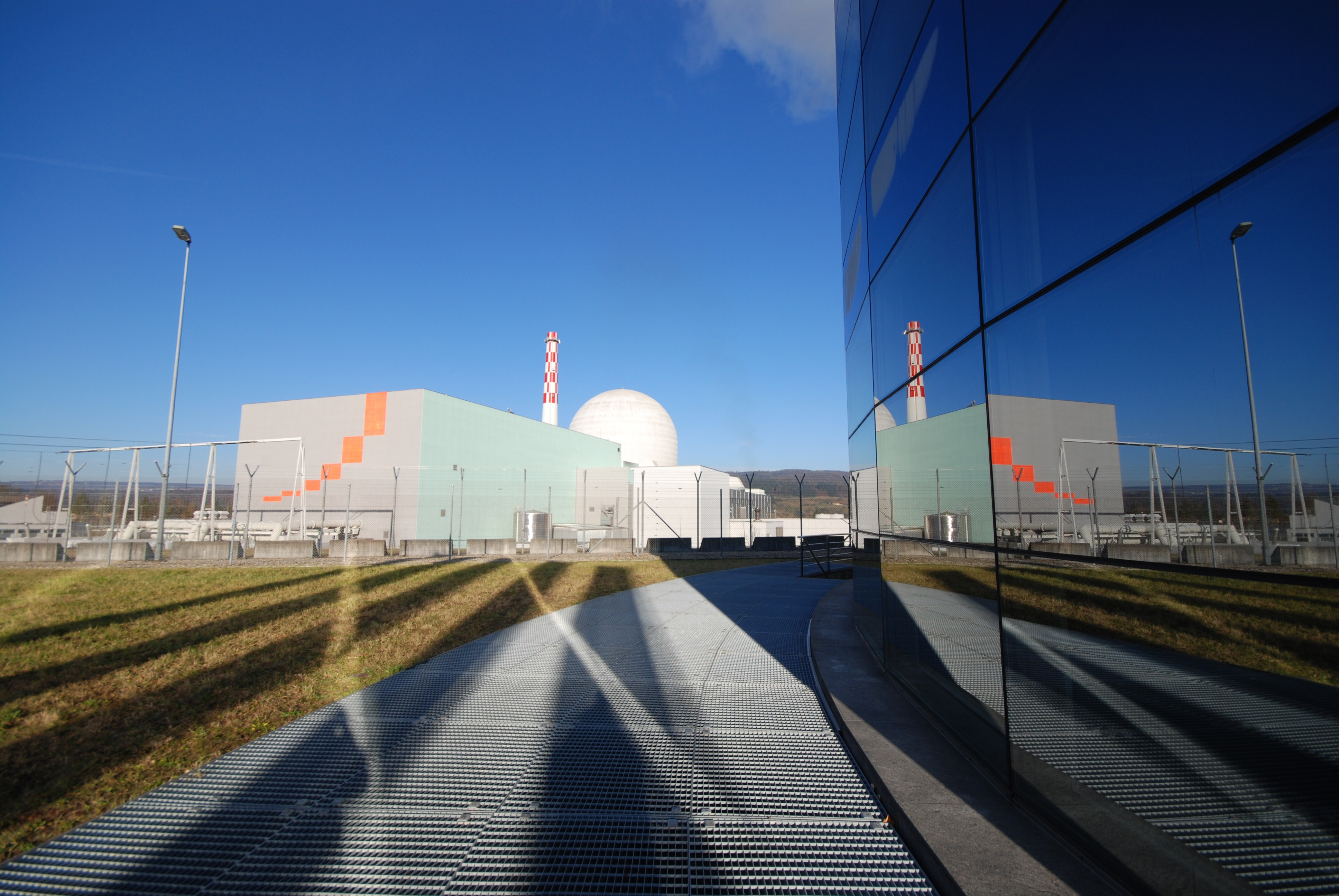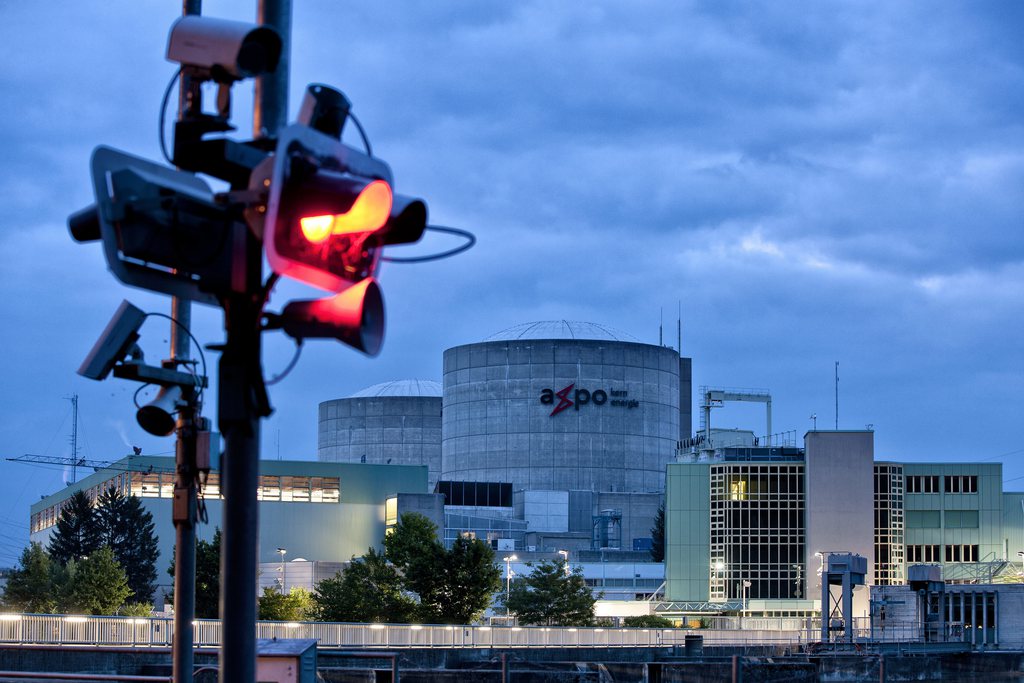Opinions remain divided over nuclear waste

The film has all the attributes of a thriller: catchy images, dramatic music and intriguing characters. But it is a documentary showcasing the challenge of storing nuclear waste safely – and highlighting the endless debate in Switzerland.
Edgar Hagen’s critical film, Journey to the Safest Place on Earth, on how to deal with nuclear waste easily won over the audience consisting largely of nuclear sceptics during a recent showing in Bern. And it wasn’t hard to understand why: the documentary plays on emotions and uses punchy simplifications to outline historical failures and the difficulties of finding suitable storage.
A few weeks later, the film Pandora’s Promise, was screened in Zurich. It criticises the hypocrisy of the environmental movement and hails nuclear power as the one technology able to save our planet from global warming. American filmmaker Robert Stone received applause and compliments from the pro-nuclear crowd.
The two screenings are emblematic of the situation Switzerland finds itself in due to the country’s grassroots democracy. In 2002 voters in canton Nidwalden rejected a repository on their territory.
The problem hasn’t gone away even though cantons no longer have a veto right on repository sites. The government still has the unpopular job of getting everybody on board since such a complex project needs broad support.
Switzerland plans to construct a deep repository to store its nuclear waste. The Federal Office of Energy has the overall responsibility for the current selection process for suitable sites. So far, six regions, which meet the requirements for a deep repository, have been identified.
The Federal Office of Energy has the overall responsibility for the three-stage selection process for one to two sites for geological repositories. The cabinet at the end of 2011 approved six areas, which meet the requirements according to Nagra, most of them north of Zurich, close to the German border.
By about 2020, one site will be chosen, which will then have to be approved by the cabinet, parliament and most likely by the people in a referendum. Then construction would start at the site. After becoming operational, the repository would be gradually backfilled and eventually sealed forever. At that point it would be very difficult and costly to recover the waste.
National referendum
The Swiss will eventually be asked to approve or reject cabinet’s final choice for a repository site in 2023 at the earliest.
“It has become clear after a 30 year disposal programme that the participation by wider sections of the population is a necessity,” the energy office writes in a 130-page document on this participatory process. “Today, we no longer pursue a ʻDecide-Announce-Defendʼ strategy, but have adopted a more transparent, comprehensible and participatory approach.”
That was an important lesson for the National Cooperative for the Disposal of Radioactive Waste (Nagra).
Nagra spokeswoman Jutta Lang said the strategy is not to indoctrinate people top-down, but to answer questions so they can make up their own minds. “The problem is that on this emotional topic there is rarely an easy answer to an easy question.”
In 2012 alone, the Federal Office for Energy organised 175 civic workshops and round tables to discuss Nagra proposals with regional authorities, interest groups and residents. The affected regions are invited to voice their concerns and make feasible proposals.

More
Last stop for nuclear waste before burial
Safety questions
Since Nagra’s foundation in 1972, the government has spent CHF1.2 billion ($1.3 billion) on its waste disposal programme. For more than three years Nagra toured German-speaking Switzerland with an exhibition entitled TIME RIDE – a journey through space and time to explain how it wants to store radioactive waste.
The government wants to move forward with the search for a site in order to deal with 100,000 cubic metres of waste, but opponents want all questions concerning safety answered first. The first repository – originally scheduled for 1985 – will not open until 2050 in a best case scenario.
“Most of the public and the politicians realise that it’s a necessity, but they don’t want [the waste] near them,” says Charles McCombie, a nuclear waste consultant at MCM Partners. “Most scientists agree it can be done safely, but this view is challenged by an active minority [of researchers].”
Opponents made their voices heard at the screening of Journey to the Safest Place on Earth. Among them was Ursula Wyss, politician with the centre-left Social Democrats, who introduced the film.
“It’s a huge legacy we leave to our children and grandchildren,” Wyss said. “The problem exceeds our technical possibilities and our sense of responsibility, and is impossible to grasp.”
Reversible solutions
During the podium discussion following the screening, she was seconded by Jürg Buri, director of the anti-nuclear group Swiss Energy Foundation. “Nobody knows for sure what will happen in 10,000, let alone one million years, with steel canisters buried in the ground. That is why we believe that Switzerland needs temporary reversible solutions instead of apparent solutions for eternity.”
Very few in the audience had much sympathy for Michael Aebersold, head of the waste disposal programme at the energy office. Aebersold defended the government’s repository plans, saying waste can only be safe if it is at some point inaccessibly sealed.
The difference between the showings of Journey to the Safest Place on Earth and Pandora’s Promise was like night and day.

More
Two very different views on nuclear energy
For Stone’s film the nuclear lobby Nuklearforum and Women in Nuclear Schweiz invited an audience mainly consisting of people with vested interests who welcomed the director’s take.
Stone’s enthusiasm and arguments recalled the spirit of optimism in the early days of nuclear power in Switzerland. The country, lacking oil and gas deposits, embraced the cheap clean energy source. In 1969, Beznau I – today the world’s oldest nuclear power plant – became operational. Waste management was not questioned, as long as it took place far from home.
Nuclear power plants operators are responsible for waste from energy production and the government must deal with waste from healthcare, industry and research. The waste must be stored on Swiss ground. Export is only acceptable if the recipient complies with Swiss law.
Switzerland has in the past considered launching waste into space, disposing it in ice sheets and injecting it in deep boreholes. And it was involved in Pangea, a project aimed at disposing of high-level waste in Australia, a country that never had a nuclear power plant.
From 1969 to 1982 Switzerland dumped 5,341 tons of low and medium-level waste in the Atlantic, less than Britain and Russia, but more than any comparable country. High-level waste spent fuel were sent to Britain and France for reprocessing.
Then ocean disposal was, step-by-step, banned and in 1976, Britain and France decided to return waste to the countries of origin, forcing Switzerland to initiate a disposal programme.
Switzerland currently stores its nuclear waste in dry casks at interim facility Zwilag. (Gallery)
(source: Nagra, Federal Office of Energy)
No plan B
But for Stone waste is not even a problem today. At one point in the documentary the camera zooms in on dry casks parked outside a United States plant. “Waste is one of the smaller issues,” said Stone after the film, explaining that in fast reactors some fuel could even be recycled. He also portrays anti-nuclear activists as irrational idealists largely devoid of logic and expert knowledge.
The hardened stances of both sides highlight the complexity of the storage issue. Its ethical implications also go beyond our concepts of time and imagination – not only those of laypeople.
“You can’t leave aside the ethics and we need transparency,” says Jürg Schacher, a nuclear physicist at the European Organization for Nuclear Research and the University of Bern. “We don’t want a cheap convenient solution where the waste is buried in oblivion,” he explains.
Markus Fritschi, head of Nagra’s repository programme, says there is no plan B if the Swiss reject the cabinet’s preferred site in about 10 years’ time.
“If we don’t find a suitable repository, we’re back to square one, and we’ll have to continue to store our waste in interim facilities on the surface – a scenario that would be a disaster waiting to happen,” he said. “Society is not stable. Just picture what Europe looked like 70 years ago, and you’ll see why this wouldn’t be a good idea.”
The safest way to store radioactive waste are deep geological repositories, requiring geological stability, minimal flows of deep groundwater, favourable groundwater chemistry and no conflict with natural resources.
At the Mont Terri Rock Laboratory in canton Jura, international researchers conduct experiments on the feasibility and safety of deep geological disposal inside clay layers formed 180 million years ago in a shallow sea during the Jurassic period.
For the repository, experts propose a depth of about 600 metres. Opalinus clay is suitable as host material because of its good isolation capacity, very low water permeability and a homogenous structure, which retains nuclides and expands into fissures and fractures.
The experts bet on a system of natural and engineered barriers, the host rock as well as the waste form, steel canisters, buffer material, backfill and seals that block off radiation. The scientists estimate that the container will have fully corroded within about 10,000 years. At that point, the nuclides will start migrating through the host rock.
(source: Nagra, Federal Office of Energy)

In compliance with the JTI standards
More: SWI swissinfo.ch certified by the Journalism Trust Initiative










You can find an overview of ongoing debates with our journalists here . Please join us!
If you want to start a conversation about a topic raised in this article or want to report factual errors, email us at english@swissinfo.ch.